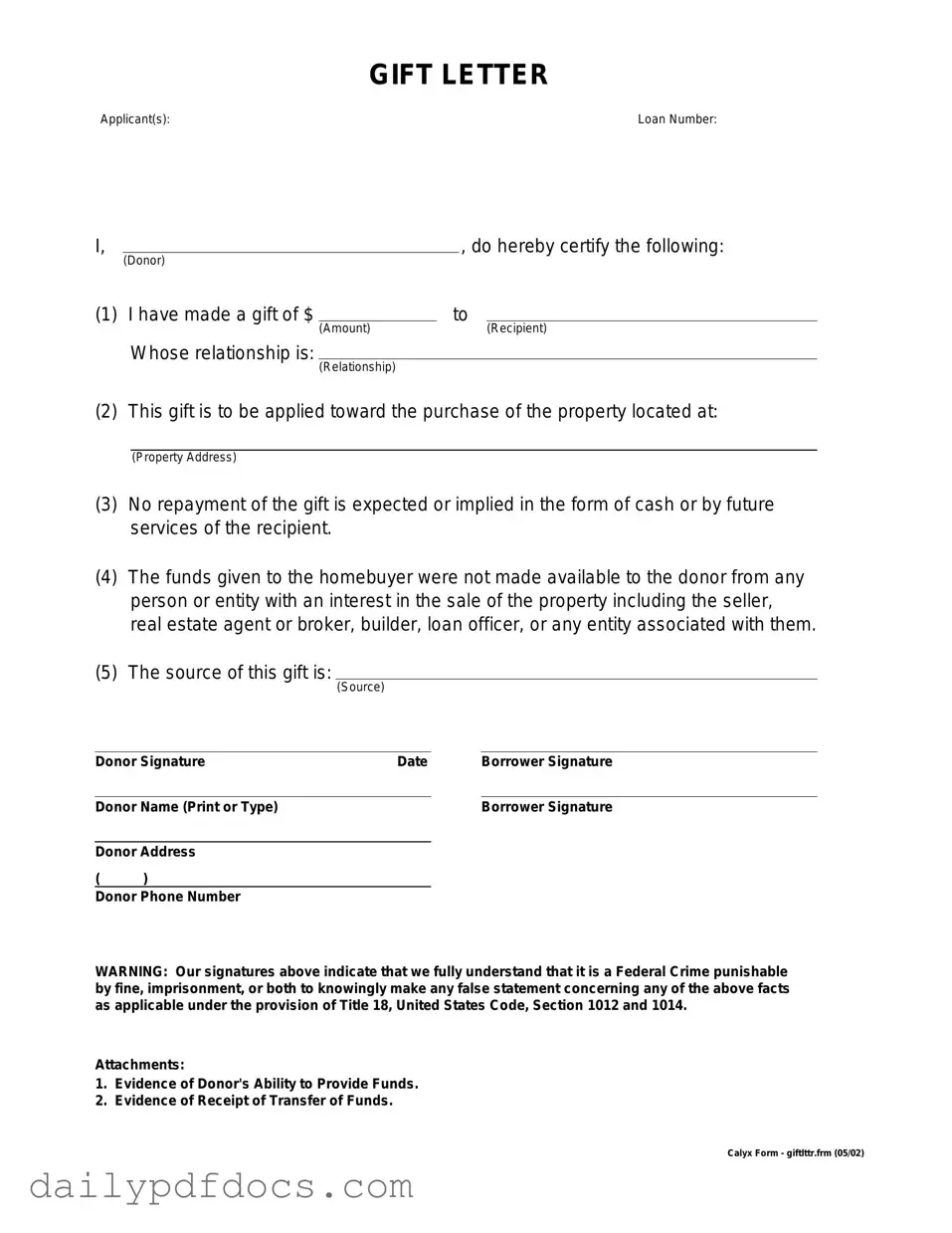What is a Gift Letter form?
A Gift Letter form is a document used to confirm that a monetary gift is being provided to an individual, typically for the purpose of assisting with a home purchase. This letter serves as proof that the funds are a gift and not a loan, which is important for mortgage lenders. By outlining the details of the gift, including the amount and the relationship between the giver and receiver, it helps clarify the source of the funds and ensures compliance with lending requirements.
Who needs to use a Gift Letter form?
Anyone receiving a financial gift to assist with a home purchase may need to use a Gift Letter form. This is particularly common among first-time homebuyers who may rely on family or friends for financial support. Lenders often require this documentation to verify that the funds are not expected to be repaid, as this can affect the borrower’s debt-to-income ratio and overall loan eligibility.
What information should be included in a Gift Letter form?
A Gift Letter form should include several key pieces of information. First, it should identify the donor and the recipient, along with their relationship. Next, the letter must state the amount of the gift and confirm that it is a gift, not a loan. Additionally, including the date of the gift and the donor's signature can add credibility. Some lenders may also request the donor’s contact information and a statement about the source of the funds.
Do I need to notarize the Gift Letter form?
Generally, notarization of the Gift Letter form is not required, but it can lend additional credibility. Some lenders may request a notarized letter to ensure authenticity, while others may accept a simple signed letter. Always check with the lender for their specific requirements regarding documentation. If notarization is needed, the donor can visit a notary public to have the letter officially witnessed.
Can a Gift Letter form be used for other types of financial assistance?
While the Gift Letter form is primarily used for home purchases, it can also be adapted for other situations where financial gifts are involved. For example, it may be used for funding education or covering medical expenses. However, the context and requirements may vary, so it’s essential to clarify the purpose with the relevant parties involved, such as lenders or educational institutions.

